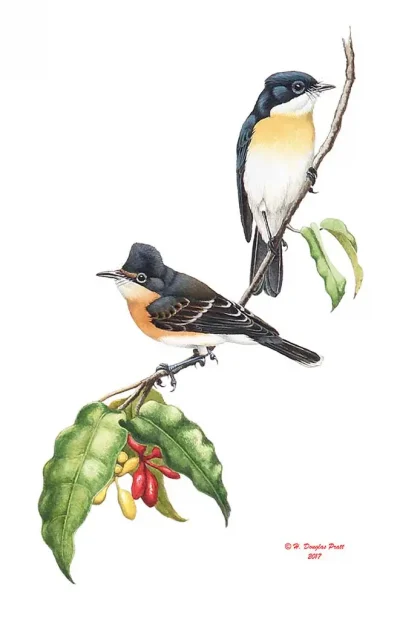Guam Flycatcher

CHuguangguang: Extinct since 1984
Scientific Name: Myiagra frecycineti (Family MONARCHIDAE)
Common Name: Guam Broadbill, Micronesian Broadbill, Freciynet’s Flycatcher
CHamoru Name: CHuguangguang
Habitat and Natural History: The Guam flycatcher was secretive. It lived in limestone and ravine forests, mangroves and tangantangan thickets. It was most often seen marking aerial forays to hawk its food of small insects on the wing. Pairs nested up to three times a year. One or two eggs were placed on a nest of twigs, roots, grass and leaves held together by spider webs. Eggs were cream colored with a band of brown spots. Both parents tended the young, which fledged in about twenty days.
Description: A small (five inches or 13 centimeters long) bird, the Guam Broadbill had different coloration for the males and females. Males were glossy blue-black above while females were brownish-gray. Both had white below and buff coloration on the breast. It had a wide bill with long “whiskers” which helped it locate its food.
Range: Endemic to Guam, the Guam flycatcher was not found anywhere else in the world.
Current Status: Extinct. It was last seen in the wild in 1984. The probable cause of extinction is predation by the introduced brown treesnake.
